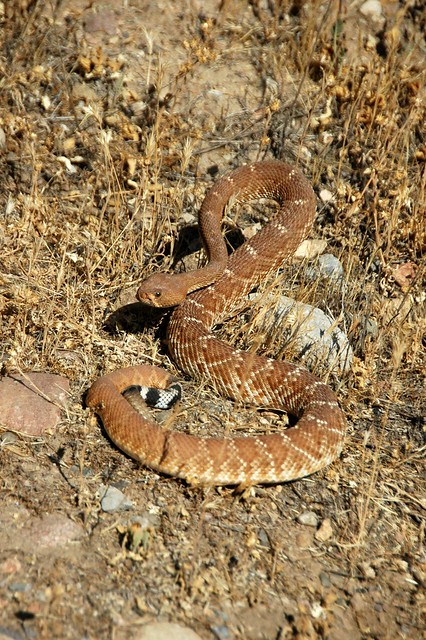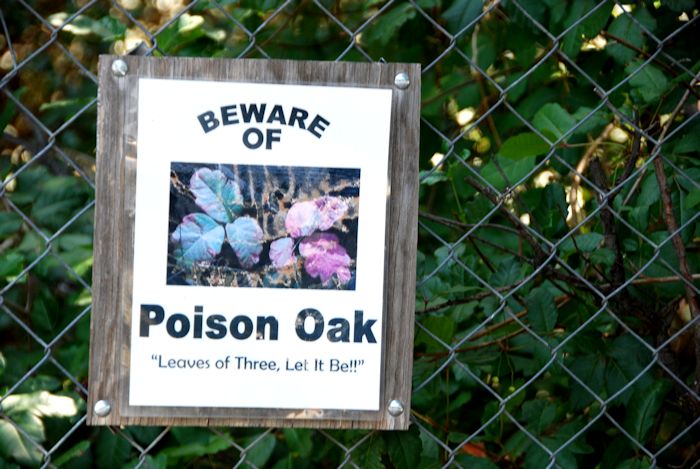The last rattlesnake I saw was wending its way down the Santiago Ranch Road from Vulture View in Whiting not two weeks ago. I looked up a little from my habitual scan of the trail and saw it, a fine copper-colored specimen with a set of black and white rings separating its diamondback from its bone-colored rattle. It ignored me, but I still had the problem of getting around it. So I scooted to the far side of the broad fire road and ventured a step at a time past it. The serpent would turn at me, flick its tongue, and threaten to rattle. I froze, held my pose for a second, took a picture, and then moved a little more. Once I got in front of it, the snake could contain its wrathful fear no more: it pulled itself into a loose coil and furiously shook its tail.
My count is up to five since February. I met four of them in Whiting and one in O’Neill. Word is that animal control officers are seeing more rattlesnakes than usual this season. Where there are rattlesnakes, there are snake bites, which is why I scold those who walk through their territory in bare feet, something I never do outside the condo — even on the street where I live.
When I met the first snake along the Vulture View Road, I did not see it until I put my foot down inches from its face. The rattler immediately encircled a deerweed and began its manic percussion. I jumped and scooted several feet away. My wife — who had walked by the spot a minute or so ahead of me — heard my habitual cry of distress which I don’t care to write about here and kept going. She thought I was having a fight with my camera. I immediately aimed and took a picture from a safe distance.



